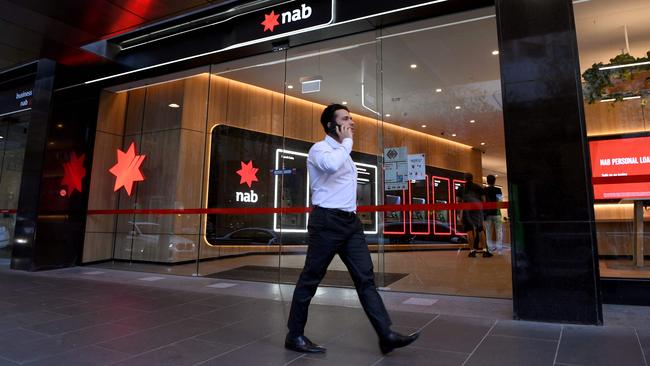NAB, Macquarie raise four and five-year fixed rates
National Australia Bank and Macquarie Bank have joined a growing list of lenders to hike their ultra-low four and five-year fixed rates.

Banks are hiking their ultra-low four and five-year fixed rate offers, largely bringing an end to the discounted loans that can be locked in for the long term.
National Australia Bank and Macquarie Bank lifted their four and five-year fixed rates on Wednesday, just a day after the Morrison government delivered its blockbuster spending 2021 federal budget. The hikes have come about despite the Reserve Bank of Australia committing to keep the official cash rate on hold until at least 2024.
Australians have been rushing to deeply discounted fixed rate offers, moving to either refinance or secure a foot in the property market. The discounted rates have been behind a surge in property prices since the end of last year.
NAB, led by chief executive Ross McEwan, has increased its four-year fixed rate by 21 basis points to 2.19 per cent for owner-occupied loans with principal and interest repayments. Its five-year rate has risen by 25 basis points to 2.49 per cent.
It was the last of Australia’s big four banks to offer a four-year fixed rate under 2 per cent, according to comparison website RateCity.com.au.
NAB and Macquarie join 30 lenders including Westpac, Commonwealth Bank and Bendigo Bank that have raised their four-year fixed rate over the past two months.
Only three lenders are now offering four-year fixed rates under 2 per cent, down from 25 at the start of the year.
BankVic’s 1.95 per cent four-year fixed rate is the lowest in the market followed by Illawarra Credit Union and ING’s 1.99 per cent, respectively.
There are also only around a handful of financial institutions such as Reduce Home Loans and Homestar Finances’s that are offering variable rates under 2 per cent.
RateCity.com.au research director Sally Tindall expects banks to start raising their three-year rates, potentially in the second half of the year.
A NAB spokesperson said it regularly reviews its rates to ensure it continues to offer its customers “competitive rates while responding to market changes”.
“Funding costs for longer-dated loans have increased this year. The sustained increase in costs has led us to make a change to our four and five-year fixed home loan rates. These changes do not impact the rates of our existing customer,” he said.

Macquarie has also lifted its four and five-year fixed rates to 2.69 per cent from 2.49 per cent and 2.79 p per cent from 2.49 per cent, respectively. The bank has also cut its variable rates for owner occupiers and investors by up to 40 basis points.
The bank told customers that in moving fixed rates it “carefully considers a number of factors including economic conditions, funding costs, and balancing the needs of all our customers”.
Canstar’s financial services executive Steve Mickenbecker says banks have been cutting their fixed home loan rates for months and shifting their focus to shorter two and three-year rates.
“Higher long-term rates help fund the skinny short-term rates,” he said.
“Economic recovery is in the air, driving longer term fixed interest rates up, and the sky high budget spending will provide further impetus to this trend.”
Record low rates has led to thousands of Australians piling into the property market to buy a new, bigger family home or investment property.
The Morrison government’s HomeBuilder program, which was launched during the coronavirus crisis last year in June, and the extension of the First Home Loan Deposit Scheme last October for new builds has also helped many Australians get on the property ladder.
To help Australians who are struggling to buy a home amid rising prices, Treasurer Josh Frydenberg announced assistance for single parent households in the 2021 federal budget on Tuesday night. He also announced further support for first home buyers buying or building a home.
The growing number of banks to hike their longer-term fixed rates comes after The Australian reported more than a month ago that lenders had started quietly ditching their ultra-low four-year fixed rate offers.



